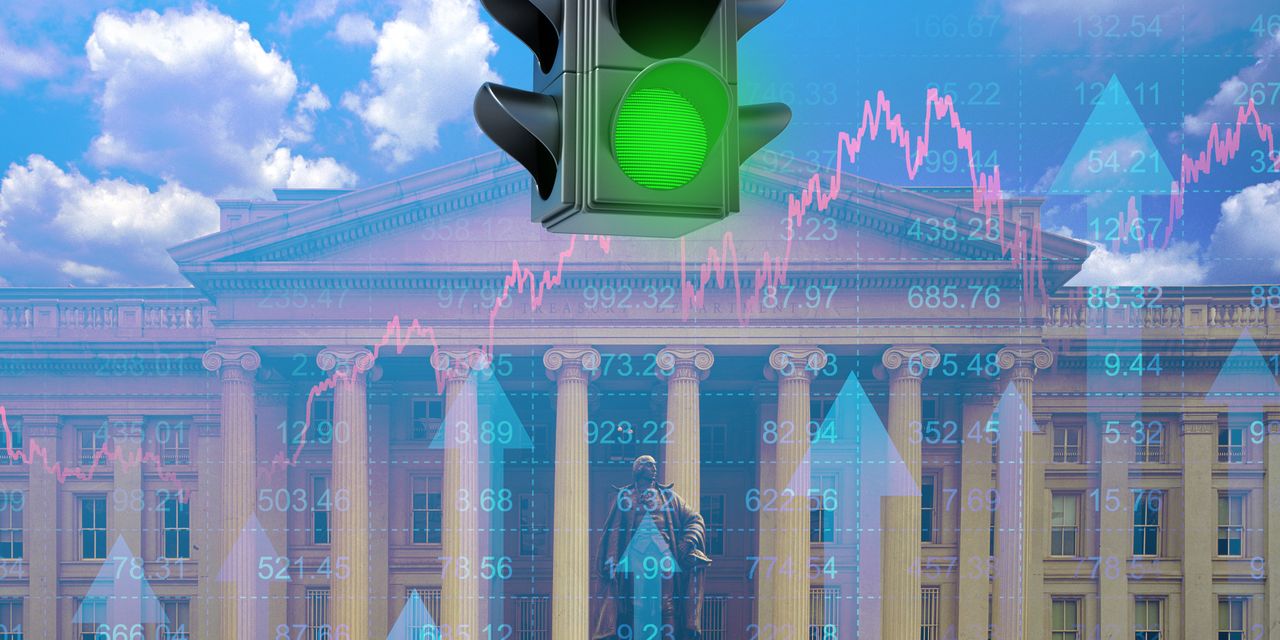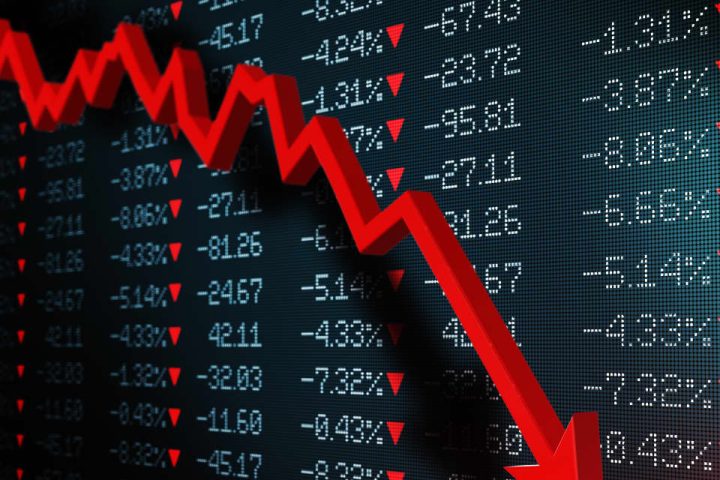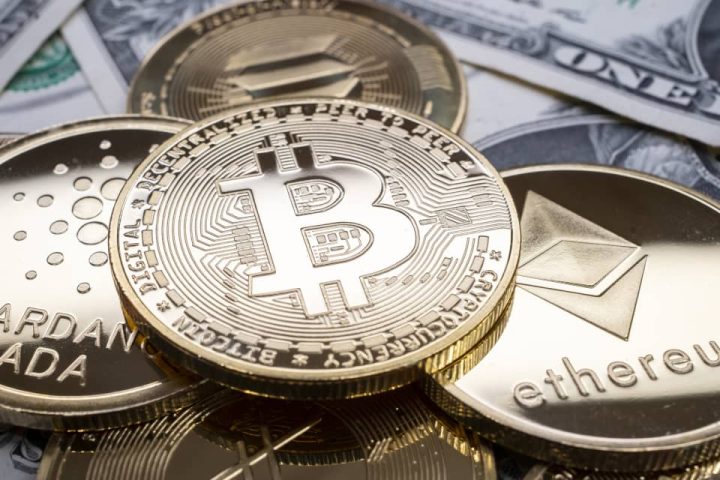The volatility in the world’s biggest bond market in recent weeks has been too much for U.S. stocks to handle as investors come to terms with the likelihood that interest rates will remain high deep into 2024 until underlying inflationary pressures ease.
The U.S. Treasury market, the bedrock of the global financial system, has been hammered by repeated selling since late September, sending the yields on the 10-year and 30-year Treasurys to levels last seen when the economy was moving toward the financial crisis in 200, before yields fell again in the past week.
Back in September a bond market selloff was fueled by a hawkish outlook from the Federal Reserve, along with mounting concern about the U.S. fiscal deficit and federal debt amid the potential for a government shutdown if a budget for the 2024 fiscal year is not settled by mid-November.
Earlier this week though, increased uncertainty about the conflict in the Middle East propelled demand for safer assets and caused longer-term bond prices to jump and their yields to fall.
Then, on Thursday, a Treasury bond auction which saw a pullback in demand despite notably higher yields, sent longer-term rates higher again while investors were already digesting inflation data that showed consumer prices remained elevated in September. The U.S. stocks fell and booked their worst day in five sessions on Thursday.
Investors are now wondering what it will take for interest rates and bond yields to fall in the months ahead and whether a retreat in yields could eventually push stocks higher to rally into the year-end.
Tim Hayes, chief global investment strategist at Ned Davis Research, said “excessive pessimism” in the bond market is setting up for a relief rally both in stock and bond prices as “there’s not as much inflationary pressures as the market has been pricing in,” he told MarketWatch in a phone interview on Thursday.
Hayes said his team found the bond sentiment data has started to reflect a “decisive reversal” away from too much pessimism in the Treasury market which could send bond yields lower and boost equities given the inverse correlations between the S&P 500
SPX
and the 10-year Treasury note yield
BX:TMUBMUSD10Y.
See: Here is what needs to happen for the S&P 500 to hold on to this year’s gains
Meanwhile, some analysts said disinflation may not be enough for the Federal Reserve to drop its “higher-for-longer” interest rate narrative which was primarily responsible for the big spike in yields since September.
The economy needs a slowdown in the consumer sector for some relaxation in the Fed’s “higher-for-longer” narrative and to maybe push policymakers to adopt a more flexible outlook for its long-term guidance, said Thierry Wizman, global FX and interest rates strategist at Macquarie.
“Of course, the Fed right now is certainly not saying anything that’s remotely suggestive of ‘high-for-long’ being taken away or being removed or negated, so I don’t expect yields to fall a lot unless we start to get reasons to believe the Fed is going to remove that narrative based on the economic data,” Wizman told MarketWatch via phone.
However, Wizman said he is confident that the U.S. consumption data will weaken over the next few months when major consumer-product and -service companies start to provide guidance for the fourth quarter, and when U.S. consumers, which have been trapped in a web of conflicting signals on the health of the economy, open their wallet for the holiday shopping season.
“This will produce some weakness on the consumer side of the market and there’s no doubt the slowdown will be more pronounced than most people expect in the economy, [but] that will be the positive scenario for bonds,” said Marco Pirondini, head of U.S. equities at Amundi U.S., in an interview with MarketWatch.
However, that also means investors should not be “too anxious to buy dips in the stock market” because it would be very unusual if the stock market doesn’t see “multiple compression” with Treasury yields at 16-year highs, Wizman said. “Stocks would still look too rich even if the Fed drops the ‘higher-for-longer’ narrative in the first quarter of 2024.”
See: Fed skips rate hike for now, but doesn’t rule out another increase this year
The “higher-for-longer” mantra is an idea Fed officials have tried to get the market to absorb in recent months, with Fed Chair Powell hardening his rhetoric at the September FOMC meeting, pointing potentially to more rate hikes or, more importantly, interest rates that stay higher for longer.
Fed officials saw interest rates coming down to 5.1% in 2024, higher than June’s outlook for rates to finish next year at 4.6%, according to the latest Summary of Economic Projections at the September policy meeting.
See: Stock-market moves show bond traders are still in charge as yields renew rise
However, Wizman characterized the “higher-than-longer” narrative as a “publicity stunt,” as he thought Fed officials simply wanted to signal to the market that they were frustrated that financial conditions hadn’t measurably tightened enough in 2023, so they utilized the narrative to get rising Treasury yields to do some of the “heavy lifting.”
“… Fed officials are not really serious about ‘higher-for-longer’ – they just did it to drive long-term yields higher for now,” he added.
If a slowdown in the consumer sector of the economy and ongoing disinflation are powerful enough to sap Fed’s rate expectations, Treasury yields could continue to decline without having to have a calamity or big recession in the U.S. economy to drive investors back to the safe-haven assets like Treasurys, strategists said.
See: U.S. stock-market seasonality suggests a potential rally in the fourth quarter. Why this time might be different.
Meanwhile, stock-market seasonality may also help lift sentiment. Historically, the fourth quarter has been the best quarter for the U.S. stock market, with the large-cap S&P 500 index up nearly 80% of the time dating back to 1950 and gaining more than 4% on average.
The S&P 500 has risen 0.9% so far in the fourth quarter, while the Dow Jones Industrial Average
DJIA
is up 0.5% and the Nasdaq Composite
COMP
has advanced 1.4% in October, according to FactSet data.
“So you have this situation where sentiment got stretched and now sentiment is reversing with more confidence that bond yields have reached their peak, so equities can rally moving into the end of the year, and that should start to become increasingly evident,” said Hayes.
The yield on the 10-year Treasury note dropped 8.2 basis points to 4.628% on Friday, while the yield on the 30-year Treasury
BX:TMUBMUSD30Y
declined by 9.2 basis points to 4.777%. The 30-year yield fell 16.4 basis points this week, its largest weekly drop since the period that ended March 10, according to Dow Jones Market Data.
Read the full article here







